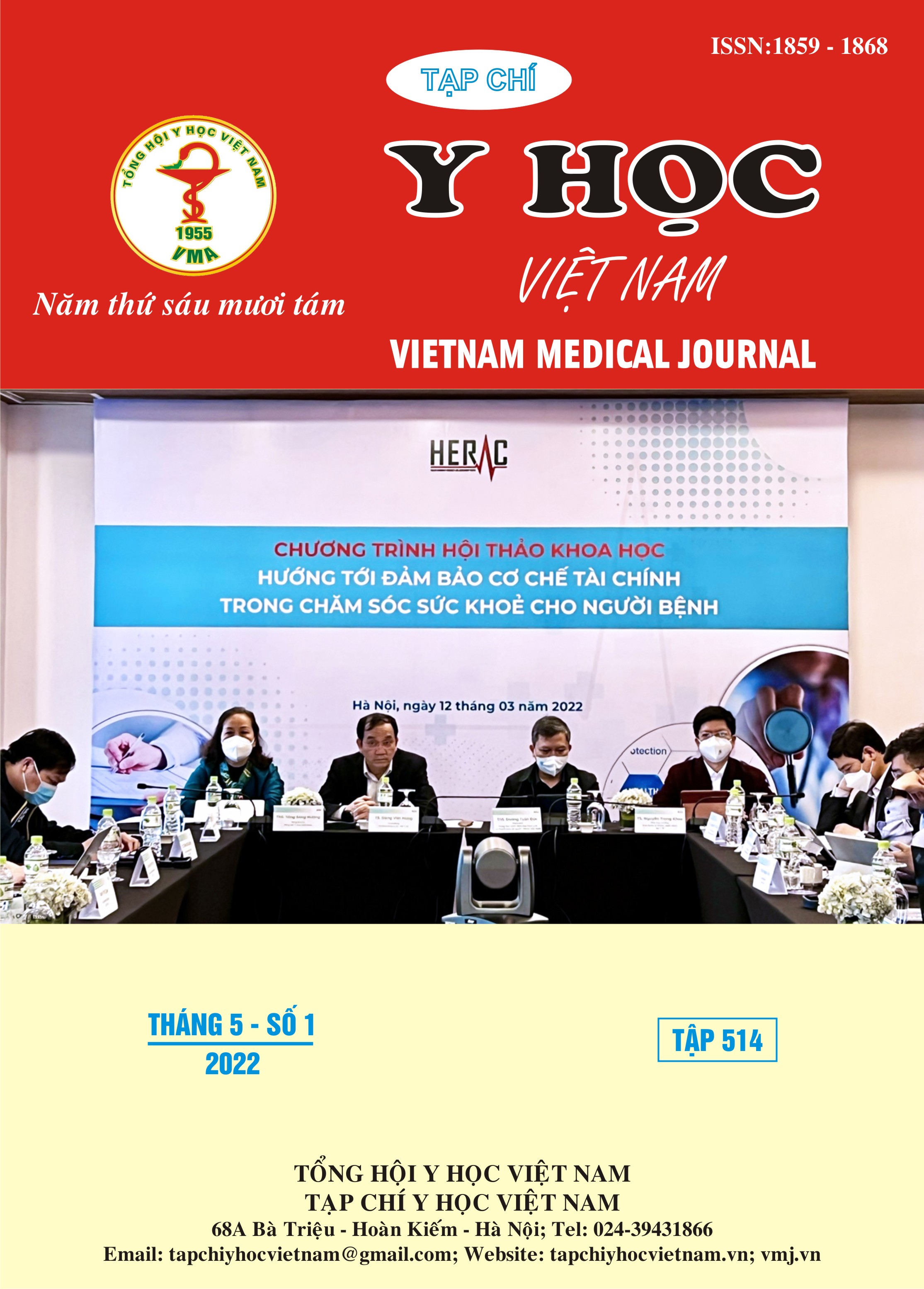EVALUATE THE CHANGES OF SOME COAGULATION INDEXES IN ROTEM TEST FOR LIVER TRANSPLANTATION
Main Article Content
Abstract
Objectives: To evaluate the changes of some coagulation indexes and the coagulation disorders in liver transplant surgery as well as the correlation between the basic coagulation indexes and the ROTEM values. Methods: Descriptive study on 34 patients getting liver transplantation. The patient had coagulation blood test and ROTEM test at 6 time points: After induction stage of anesthesia (To); the end of the dissection phase (T1); the end of the anhepatic (no liver) phase (T2); after reperfusion (5 min after release of the venous anastomosis) (T3); new liver phase (T4), and the first day of postimplantation (T5). During surgery, the patient received blood products transfusion according to the protocol of Viet Duc hospital. The test results are compared with the reference range of the test laboratory and compared with the To point index. The basic coagulation indexes was analyzed and correlated with the corresponding index on ROTEM test. Results: Hypocoagulation was very common in liver recipients, especially in the reperfusion phase (prolonged APTT in 76.5%, fibrinogen reduction in 79.4% and thrombocytopenia in 76.5%. in 91.2% of patients) and new liver stage (prolonged PT was seen in 35.3%). However, the coagulation indexes tended to return to normal value on the first day after transplantation. There is a strong correlation between the basic coagulation indexes and the ROTEM indexes: PT with CT- EXTEM (r: 0.394); aPTT with CT- INTEM (r: 0.61); Platelet count with A10 – EXTEM (r: 0.819); fibrinogen concentration with MCF - EXTEM (r: 0.631). Conclusions: Patients receiving liver often experience hypocoagulation disorders during the reperfusion phase and the new liver phase. ROTEM values have a strong correlation with the basic coagulation indexes, which can help to make treatment decisions earlier.
Article Details
Keywords
Liver transplantation, coagulation disorder, ROTEM, blood transfusion
References
2. Roullet S, Freyburger G, Cruc M, et al. Management of bleeding and transfusion during liver transplantation before and after the introduction of a rotational thromboelastometry–based algorithm. Liver Transplantation. 2015;21(2):169-179. doi:10.1002/lt.24030
3. Trần Thị Hằng. Đặc điểm rối loạn đông máu và bước đầu nhận xét hiệu quả ứng dụng Rotem trên bệnh nhân ghép gan từ người cho chết não tại Bệnh viện Việt Đức. Y học Việt Nam. Published online April 17, 2018.
4. Hashir A, Singh SA, Krishnan G, Subramanian R, Gupta S. Correlation of early ROTEM parameters with conventional coagulation tests in patients with chronic liver disease undergoing liver transplant. Indian J Anaesth. 2019;63(1):21-25. doi:10.4103/ija.IJA_334_18
5. Chow JH, Lee K, Abuelkasem E, Udekwu OR, Tanaka KA. Coagulation Management During Liver Transplantation: Use of Fibrinogen Concentrate, Recombinant Activated Factor VII, Prothrombin Complex Concentrate, and Antifibrinolytics. Semin Cardiothorac Vasc Anesth. 2018;22(2):164-173. doi:10.1177/1089253217739689
6. Dumitrescu G, Januszkiewicz A, Ågren A, Magnusson M, Wahlin S, Wernerman J. Thromboelastometry. Medicine (Baltimore). 2017; 96(23):e7101. doi:10.1097/ MD.0000000000007101
7. Kim B, Quan ML, Goh RY, et al. Comparison of Prolonged Prothrombin and Activated Partial Thromboplastin Time Results With Thrombelastograph Parameters. Lab Med. 2013;44(4):319-323. doi:10.1309/LM2KBXKISKD9B1EA
8. Kamel Y, Hassanin A, Ahmed AR, et al. Perioperative Thromboelastometry for Adult Living Donor Liver Transplant Recipients with a Tendency to Hypercoagulability: A Prospective Observational Cohort Study. TMH. 2018;45(6):404-412. doi:10.1159/000489605


